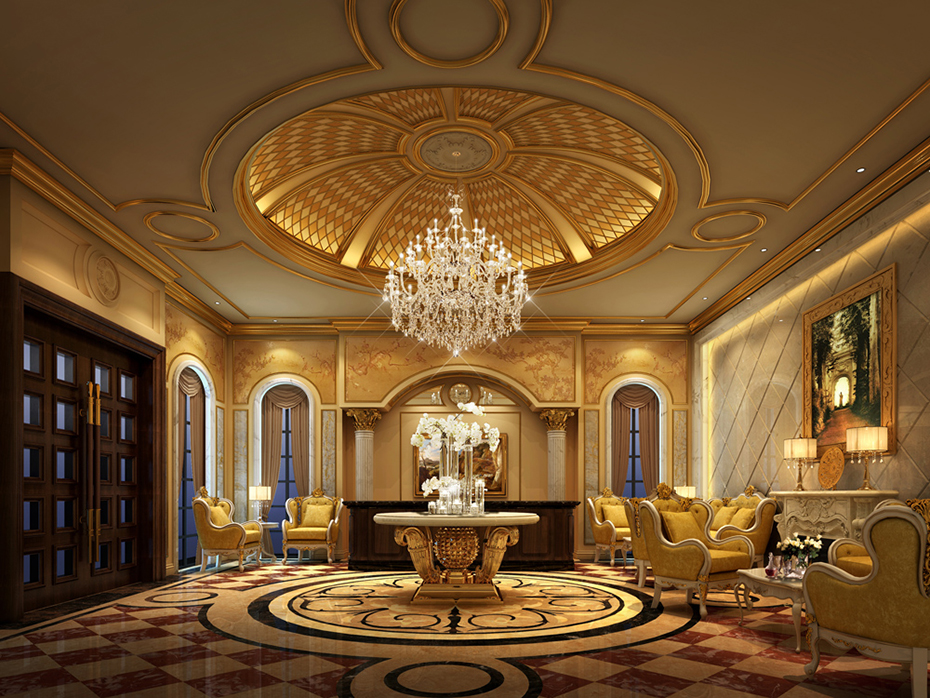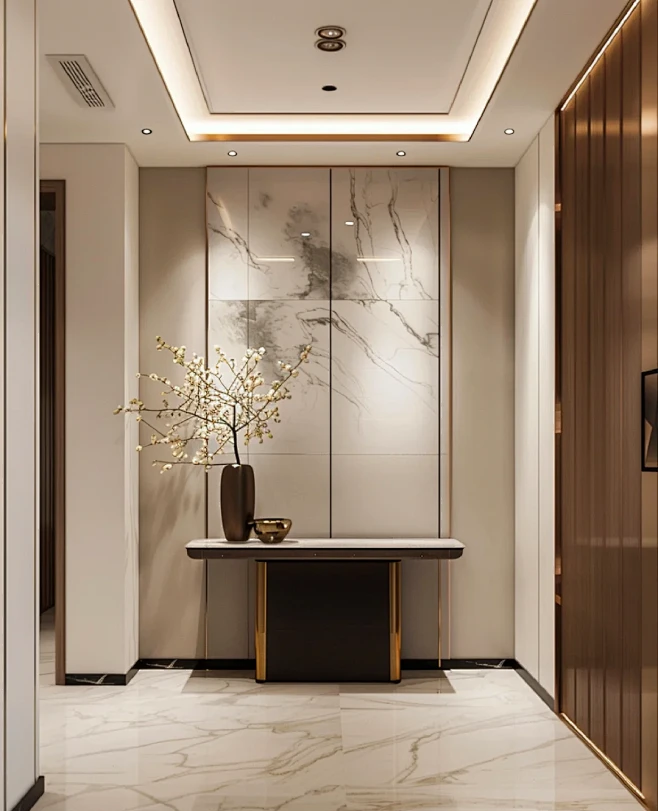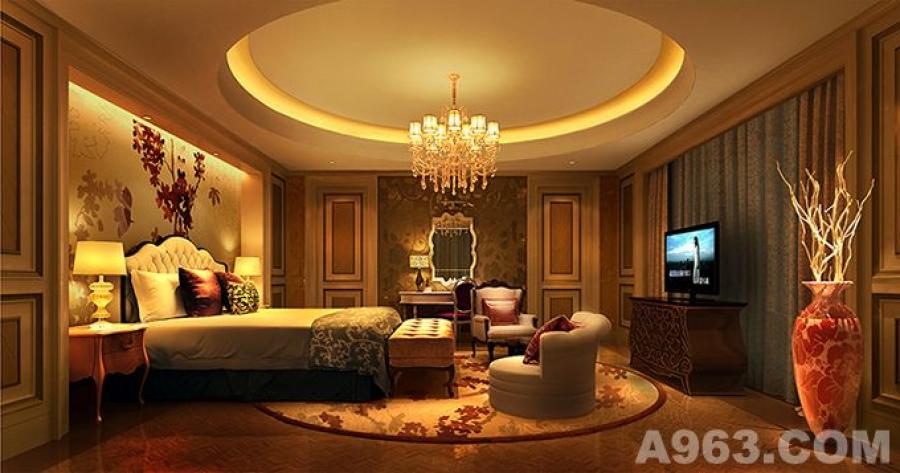The key to villa lighting design lies in leveraging the high ceilings to create a rich, dynamic light and shadow effect, rather than limiting it to a single lighting function. Relying solely on a central main light with evenly distributed fill light can easily make the space appear rigid and dull, losing the transparency and quality that a villa should possess. Conversely, through detailed lighting design, the space can both meet functional needs and enhance its style.

From a practical design perspective, the lighting details of high-end villas can be developed around the following areas, using a combination of point and line light sources to balance practicality and decorative qualities:
1. Entryway: Focus on "Detailed Fill Lighting"
As the first impression upon entering, the entryway must avoid dark corners. For example, incorporating a sensor-activated floor light at the bottom of the entryway cabinet can address the issue of insufficient light when the door is opened while creating a warm and inviting feeling through soft floor light and shadow, making the entry experience more intimate and engaging. This is also a key aspect of design detail.

2. Display Area: Balancing "Primary and Secondary Light and Shadow"
For display areas such as artwork and display cabinets, it is important to ensure a smooth transition between primary and secondary lighting. The primary display lighting should precisely focus on the exhibits, highlighting the details and textures. Auxiliary lighting around the perimeter should maintain a controlled brightness gradient to avoid glare or discontinuities, creating a natural visual transition from the focal point to the surrounding areas and preventing disruption to the overall ambiance of the space.

3. Functional Spaces: Adapting to "Atmosphere Needs"
In spaces like audio-visual rooms and reading rooms, the design of ambient lighting directly impacts the user experience:
Audio-visual rooms can incorporate low-brightness diffuse light strips (such as embedded in the wall or ceiling edges) to mitigate the glare from the TV/projector screen, making viewing more comfortable.
Reading rooms should incorporate soft auxiliary lighting between bookshelves and along the edges of tabletops to complement the primary reading lights and prevent visual fatigue from prolonged reading.
4. Practical Areas: Ensure "Adequate Lighting"
Garages and utility rooms prioritize functionality. Choose high-color-rendering lighting (such as ceiling lights and downlights) to ensure ample illumination throughout the space, eliminating blind spots. This not only facilitates visual inspection when parking, but also makes it easier to store and locate items, avoiding safety hazards caused by dim lighting. 5. Staircases: Balancing "Safety and Aesthetics"
Stairwells are suitable for concealed linear light strips, which can be embedded in the edges of the steps or inside the handrails. These strips not only enhance the staircase's lines and add depth to the high-ceiling space, but also eliminate blind spots during nighttime commuting, enhancing aesthetics while ensuring safety.
6. Walk-in Closets: Emphasizing "Convenience and Precision"
The lighting design of a closet should balance practicality and clothing display needs. Sensor-activated lighting is the core – automatically turning on when the door is opened and off after a delay when it is closed, eliminating manual operation. Cold light spotlights can also be used to focus on the clothing hanging area, accurately reproducing fabric colors, making it easier to choose and adding a touch of sophistication to the space.
Overall, villa lighting design should be based on a "point light + linear light" approach. Point light sources (such as spotlights and downlights) are often used in key areas such as the entryway and display areas to enhance the spatial focus. Linear light sources (such as LED strips and wall washers) are embedded in background walls, cabinets, and staircases to enrich the layers of light and shadow. Whether it is a crystal chandelier that shows luxury or a simple chandelier that suits the modern style, it needs to be integrated into the overall lighting system to ultimately achieve the "unity of function and decoration", which not only meets daily use but also reflects the owner's taste in life.

